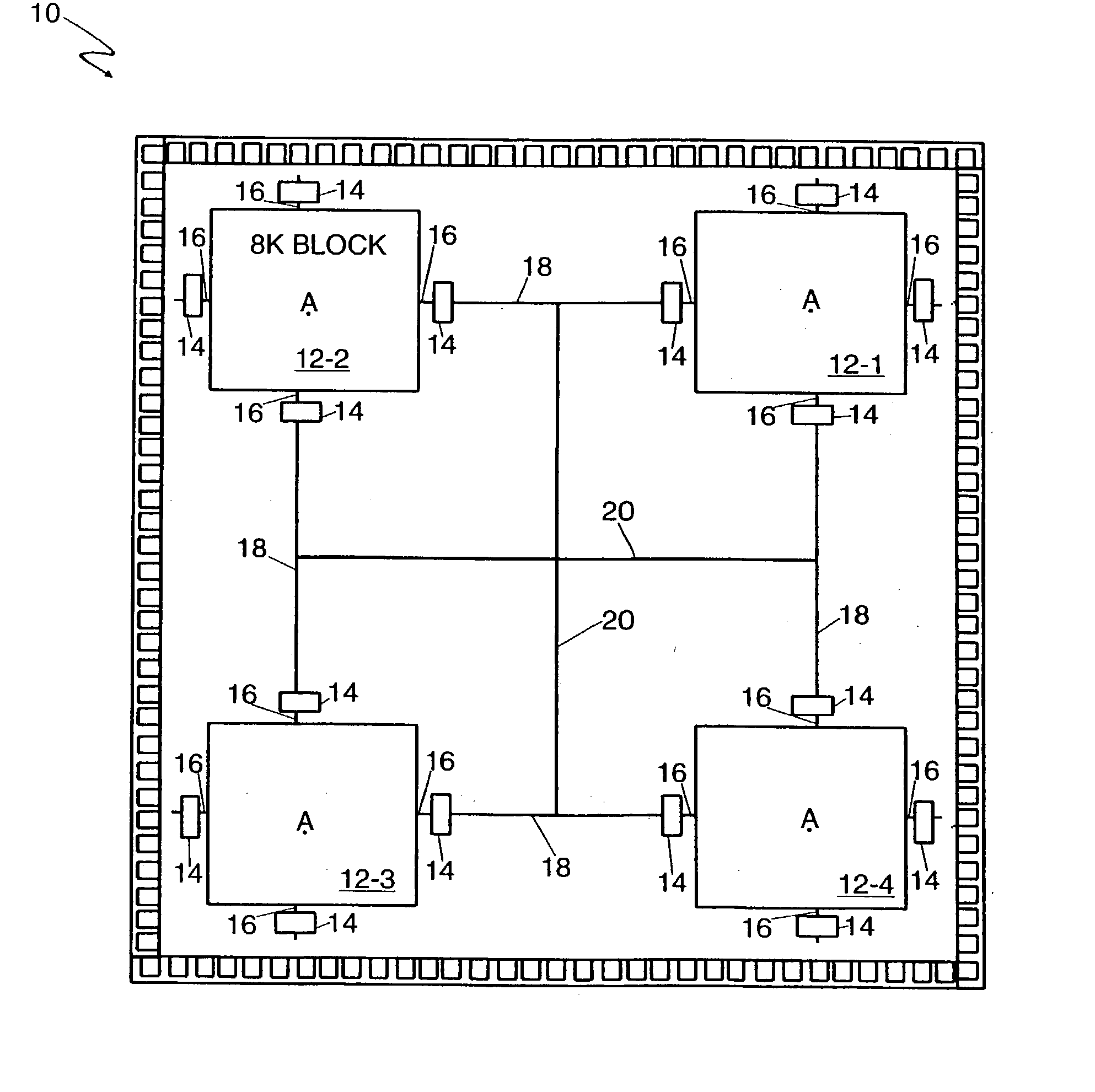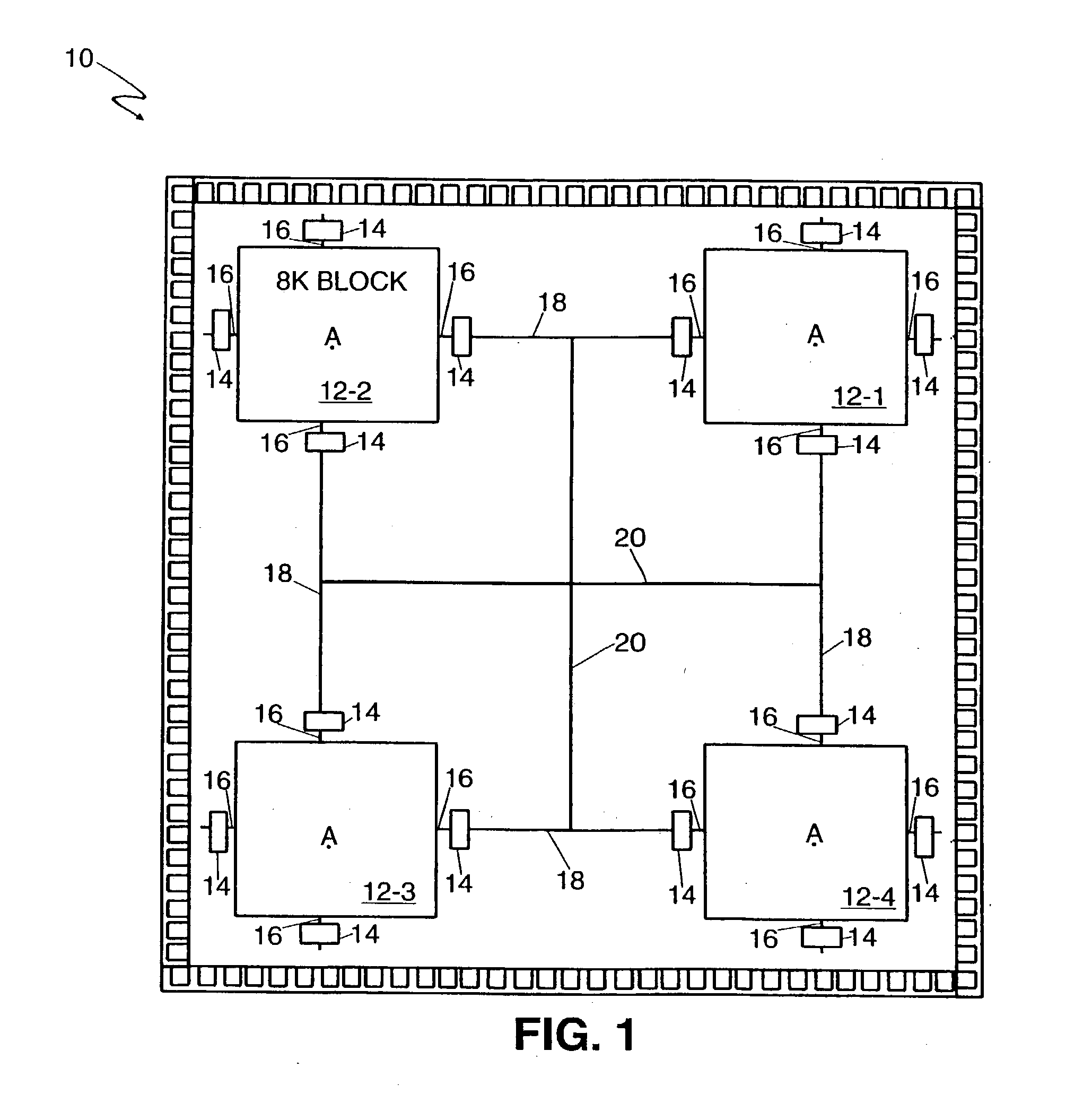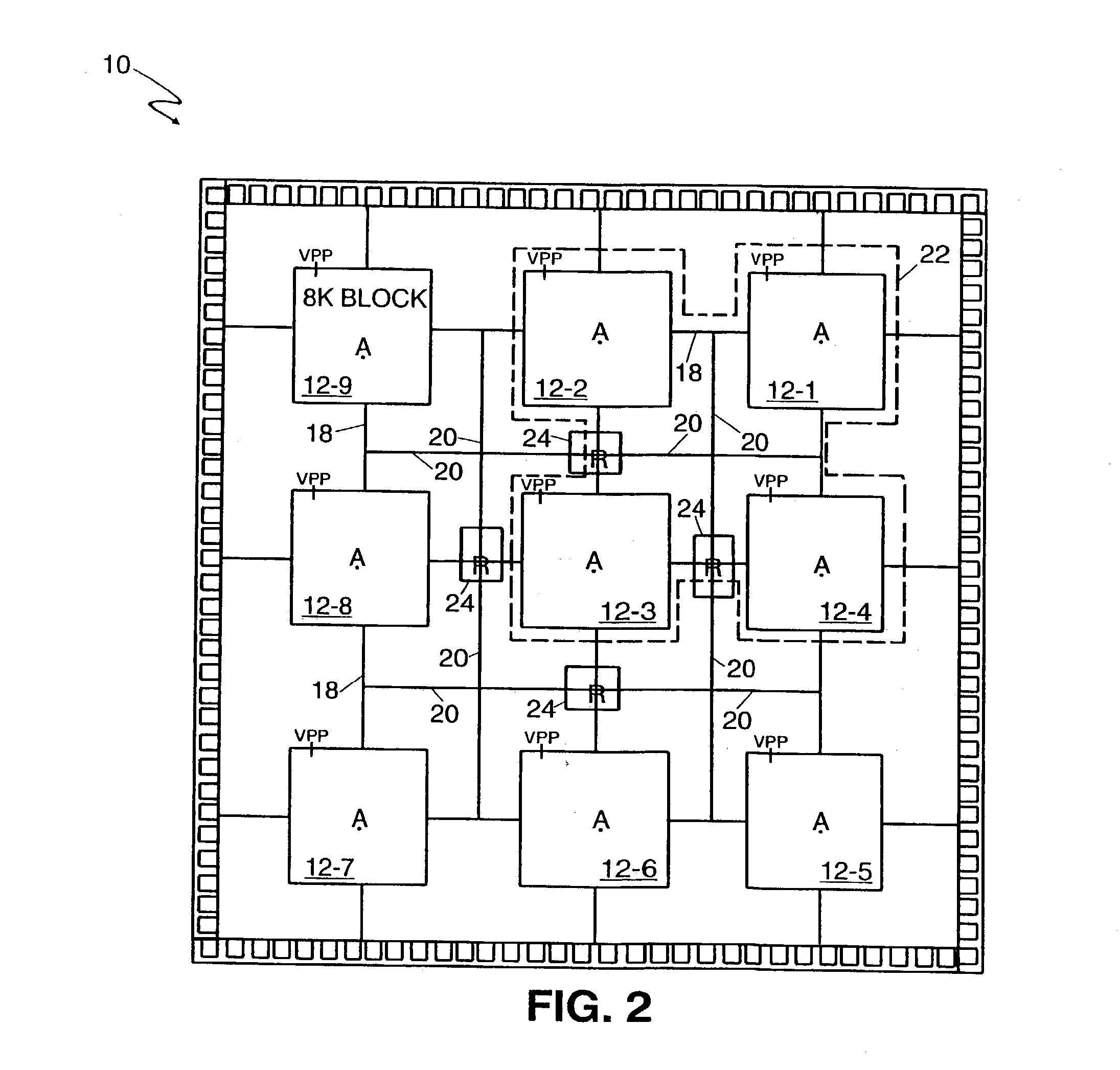High density antifuse based partitioned FPGA architecture
a high density, anti-fuse technology, applied in the direction of instruments, pulse techniques, computations using denominational number representations, etc., can solve the problems of prohibitively long programming time of the fpga, large total fuse leakage during the normal operation of a large anti-fuse-based fpga, and limited capacitive nets of routing conductors with antifuses on them
- Summary
- Abstract
- Description
- Claims
- Application Information
AI Technical Summary
Benefits of technology
Problems solved by technology
Method used
Image
Examples
Embodiment Construction
[0022] Those of ordinary skill in the art will realize that the following description of the present invention is illustrative only and not in any way limiting. Other embodiments of the invention will readily suggest themselves to such skilled persons.
[0023] According to the present invention, FIG. 1 illustrates a partitioned FPGA architecture 10 including four blocks 12-1 through 12-4 of logic function modules laid out in a 2.times.2 grid pattern, bidirectional buffer banks 14, buffer channels 16, block interconnect channels 18 and routing channels 20. Also accompanying the partitioned FPGA architecture are I / O modules that are not shown to avoid overcomplicating the disclosure and thereby obscuring the present invention. It is presently contemplated that the I / O modules will be preferably disposed along the periphery of the FPGA architecture 10, and will be decoupled from the array. According to design choice the I / O modules can be modified based on the I / O requirements for differ...
PUM
 Login to View More
Login to View More Abstract
Description
Claims
Application Information
 Login to View More
Login to View More - R&D
- Intellectual Property
- Life Sciences
- Materials
- Tech Scout
- Unparalleled Data Quality
- Higher Quality Content
- 60% Fewer Hallucinations
Browse by: Latest US Patents, China's latest patents, Technical Efficacy Thesaurus, Application Domain, Technology Topic, Popular Technical Reports.
© 2025 PatSnap. All rights reserved.Legal|Privacy policy|Modern Slavery Act Transparency Statement|Sitemap|About US| Contact US: help@patsnap.com



